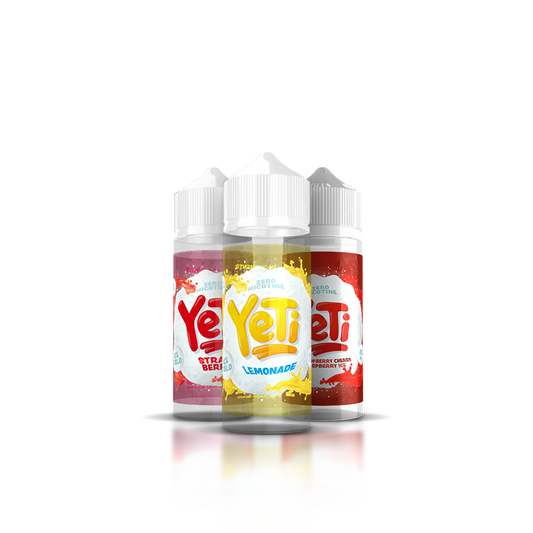
How airflow and coil resistance change your vaping experience.
Every vaper knows that e liquid flavour, nicotine strength and device design matter. But two factors that often get overlooked are coil resistance and airflow. These technical details shape everything from the density of your vapour to the sharpness of your throat hit, and even how quickly your battery drains. Understanding coil resistance and airflow gives you control over your experience, allowing you to fine tune vaping to match your needs, whether you want big clouds, discreet satisfaction or the perfect flavour balance.
What coil resistance actually means
Coil resistance is measured in ohms. It refers to how much electrical resistance your coil offers when current passes through it. Lower resistance means electricity flows more freely, generating more heat and producing more vapour. Higher resistance means less current, less heat and generally a cooler, lighter vape. This is where the terms sub ohm and above ohm vaping come from.
Sub ohm versus above ohm
Sub ohm coils, meaning those with a resistance under 1.0 ohm, produce large clouds, intense flavour and warmer vapour. They are popular for direct to lung vaping, where you inhale vapour straight into your lungs like you would with a shisha. Above ohm coils, usually between 1.0 and 2.0 ohms, deliver a tighter draw, closer to the sensation of smoking a cigarette. They are better suited to mouth to lung vaping, where you draw vapour into your mouth before inhaling. Both approaches have their benefits, and your choice should match your personal preference, nicotine strength and the context you are vaping in.
How resistance shapes flavour and nicotine hit
Coil resistance is not just about cloud size. It directly influences flavour intensity and nicotine delivery. Sub ohm vaping is best paired with lower nicotine strengths, usually in the range of 3 mg to 6 mg, because the increased vapour volume delivers more nicotine per puff. Higher resistance coils pair well with higher nicotine strengths, such as 12 mg or nicotine salts, which provide a stronger hit even in smaller volumes of vapour. Matching resistance with nicotine type prevents harshness and ensures satisfaction.
Airflow as the second half of the equation
If coil resistance is the engine of your vape, airflow is the steering wheel. Airflow refers to how much air moves through your device while you inhale. Wide open airflow produces bigger clouds and a smoother draw, while tighter airflow creates more resistance, a stronger throat hit and intensified flavour. Adjustable airflow rings or sliders allow you to customise this balance. Some vapers prefer a wide, airy draw, while others prefer a tight, cigarette like pull. Airflow control lets you decide.
Airflow and flavour balance
Flavour is affected heavily by airflow. Too much airflow can dilute flavour, because vapour mixes with too much air before hitting your tongue. Too little airflow can overheat the coil, creating burnt notes or harshness. The sweet spot is personal, but as a rule, tighter airflow tends to increase flavour intensity, while looser airflow prioritises cloud production. Experimenting helps you find the right balance for each e liquid, since dessert flavours, menthols and tobacco blends can all respond differently.
The interaction between coil resistance and airflow
Coil resistance and airflow are not separate. They work together to shape your overall experience. A sub ohm coil with wide airflow is ideal for cloud chasing and direct to lung vaping. A higher resistance coil with restricted airflow delivers a discreet, cigarette like experience. Mid range setups, combining medium resistance with moderate airflow, balance flavour, nicotine hit and cloud production. Once you understand the mechanics, you can deliberately adjust one to complement the other.
How device design influences control
Different devices offer different levels of control. Starter kits often have fixed airflow and coils designed for simplicity. Advanced kits and vape devices offer replaceable coils, adjustable airflow rings and variable wattage settings. Pod systems strike a middle ground, with swappable pods and coils and semi adjustable airflow. The more advanced the device, the more you can tweak coil resistance and airflow to customise your experience. But even at beginner level, understanding the basics helps you make smarter choices about what to buy.
How coil resistance affects battery life and e liquid use
One overlooked aspect of coil resistance is how it influences battery life and consumption. Sub ohm coils use more power, draining batteries faster and using more e liquid per puff. This suits people who enjoy short, powerful sessions but may frustrate those who want all day battery life. Higher resistance coils use less power and consume less liquid, making them more economical and convenient for extended use. Choosing resistance is partly about balancing performance with practicality.
Airflow, coil life and maintenance
Airflow also influences coil lifespan. Wide open airflow tends to keep coils cooler, reducing stress and extending their life. Restricted airflow can increase heat, which can shorten coil life if wattage is too high. Proper maintenance matters too, including priming coils before use, keeping tanks clean and replacing coils when flavour drops off. Adjusting airflow to keep your coil in a comfortable range helps prolong performance and saves money in the long run.
Finding your sweet spot
There is no single correct way to vape. Some vapers crave clouds and flavour intensity, others prefer discreet satisfaction with a cigarette like draw. Coil resistance and airflow are tools that let you design your own experience. Understanding them means you no longer rely on guesswork, but can deliberately build a setup that delivers what you want. Whether you lean towards high VG shortfills for clouds or tight draws with nicotine salts, control is in your hands.
Final thoughts
Coil resistance and airflow are the unsung heroes of vaping. They shape flavour, nicotine delivery, throat hit, vapour volume, battery use and overall satisfaction. Too often overlooked, they are what separates a mediocre vape from a personalised experience. Learn to experiment, match your coil to your liquid, and adjust your airflow to your taste. The result is a vaping experience that feels designed for you rather than imposed by the device. Knowledge is control, and in vaping, control is the path to satisfaction.
Join the conversation and explore more
Have you experimented with coil resistance and airflow? Share your experiences, tips or frustrations in the comments, and pass this article on to friends who are still trying to find their sweet spot.
Want to upgrade your setup? Visit Vape Lounge UK and explore our e liquids, nicotine salts, devices, pods and coils and accessories. Whether you are into clouds, flavour or simplicity, we have the kit and liquids to match your style.
If you prefer to shop in person, come visit us at 147 Great Ancoats Street, Manchester M4 6DH or 71 Stafford Street, Stoke on Trent, ST1 1LW. You can also reach us at hello@vapelounge.uk or call 0161 637 6066. We are here to help you fine tune your experience and enjoy vaping on your terms.






